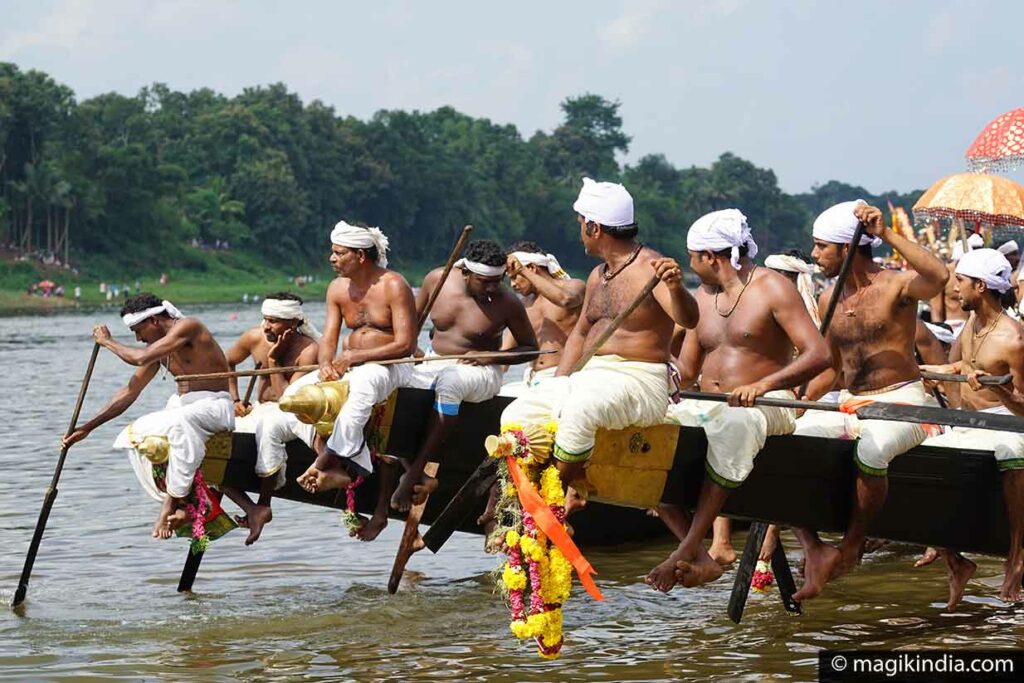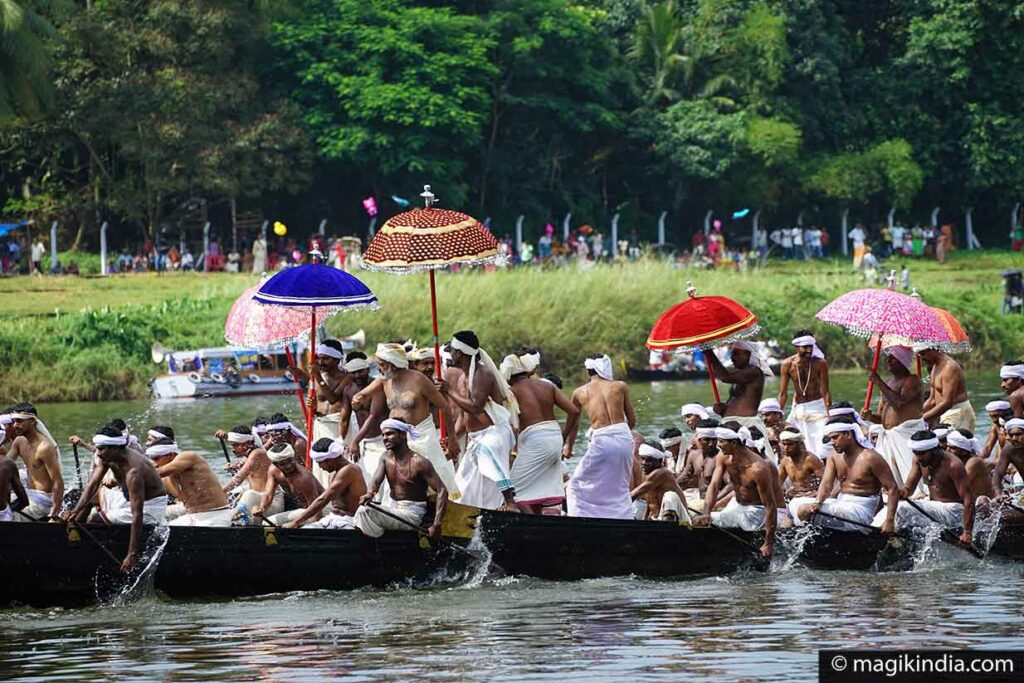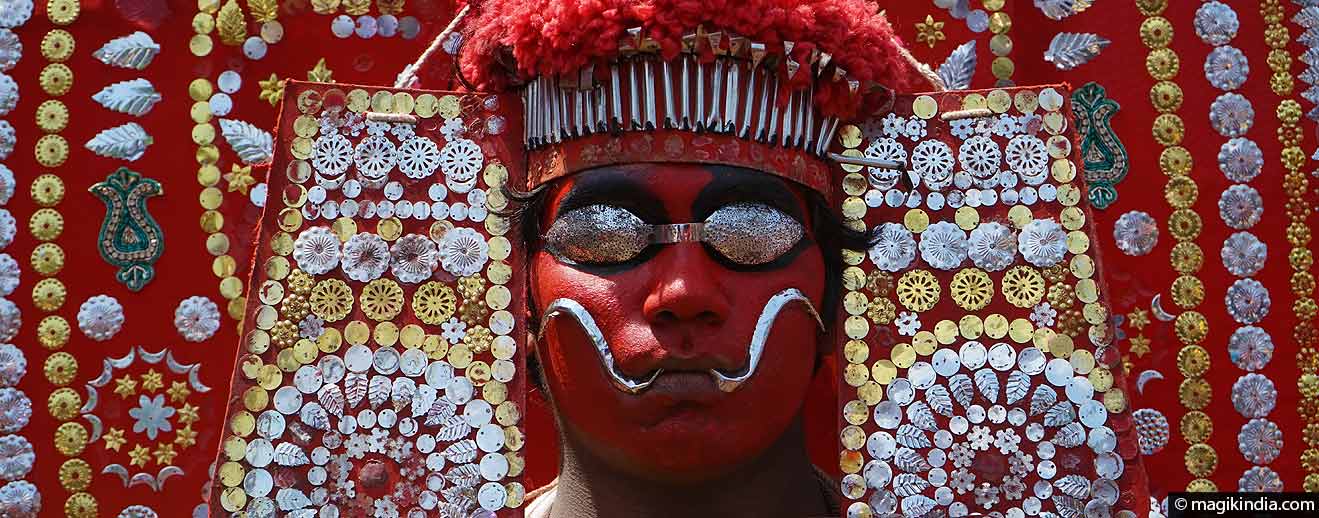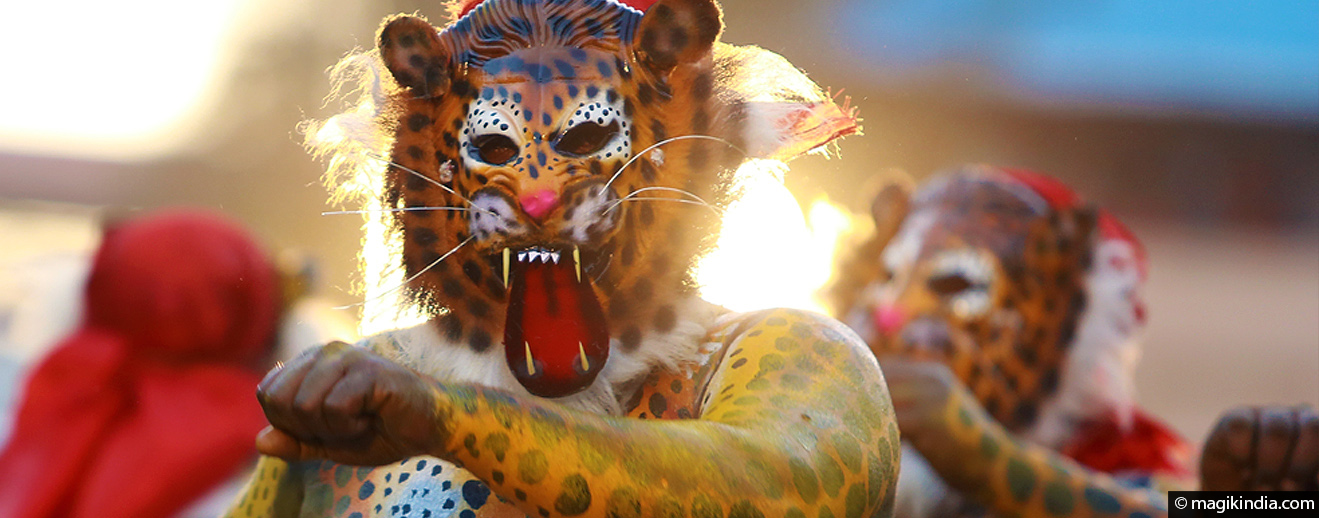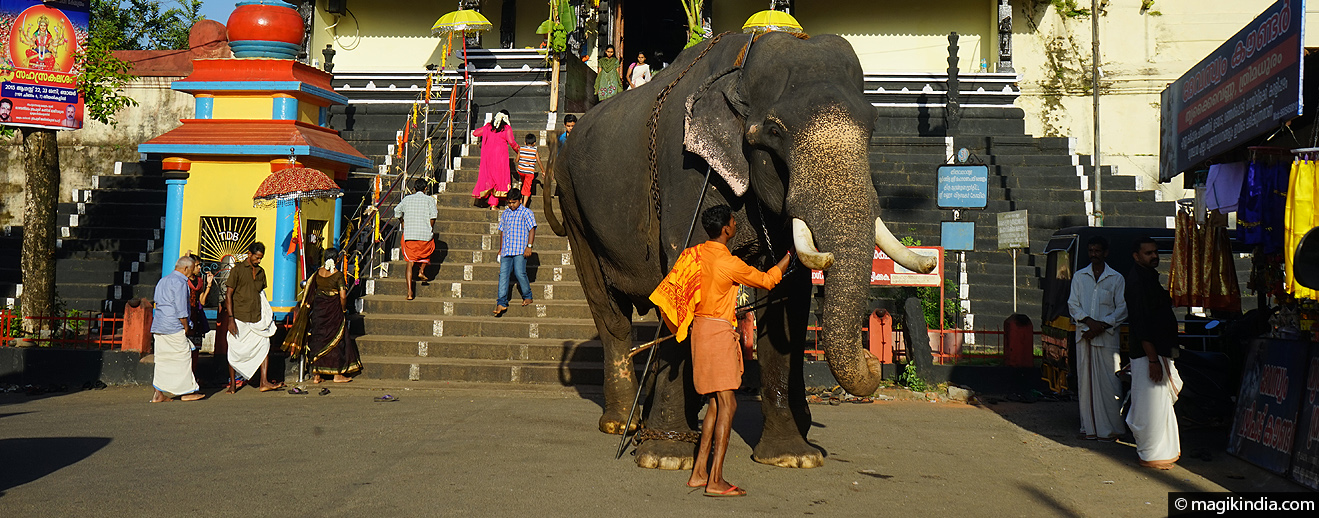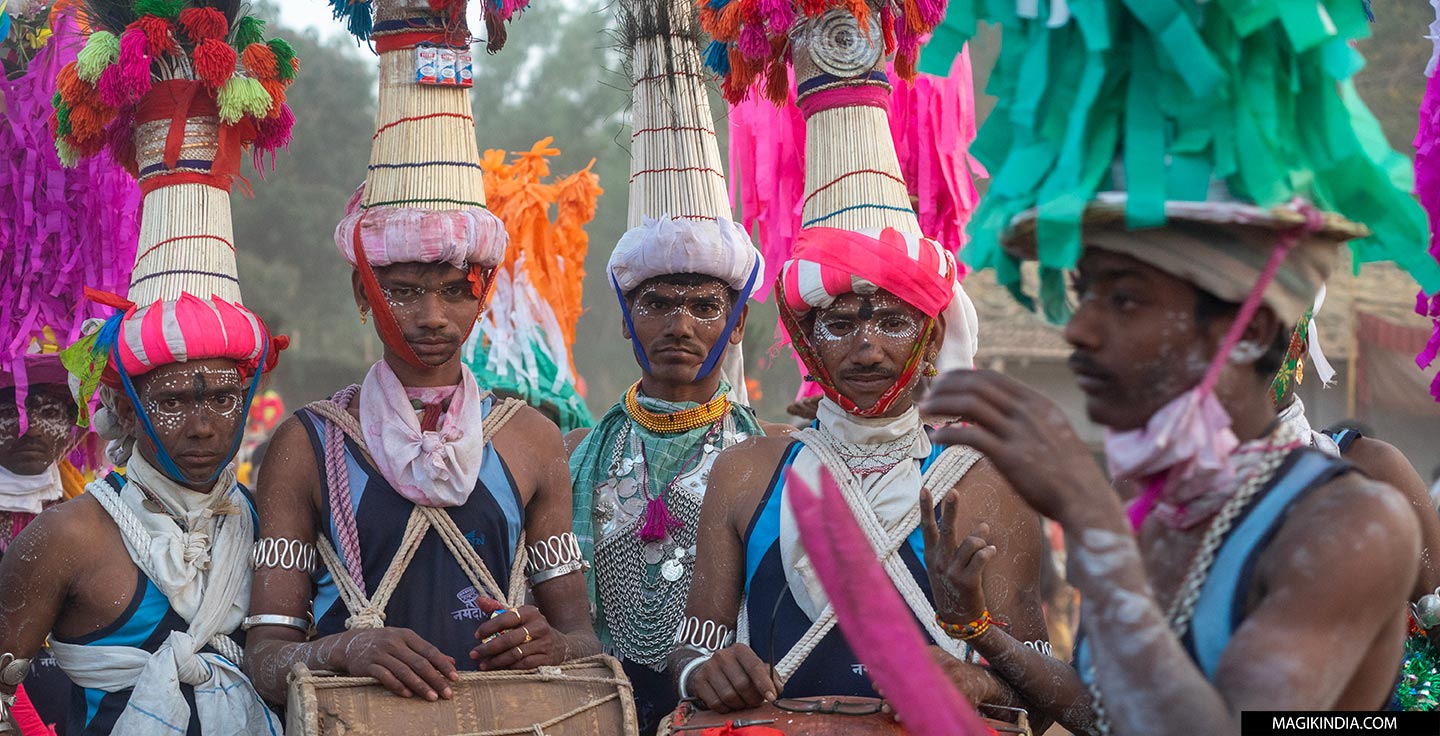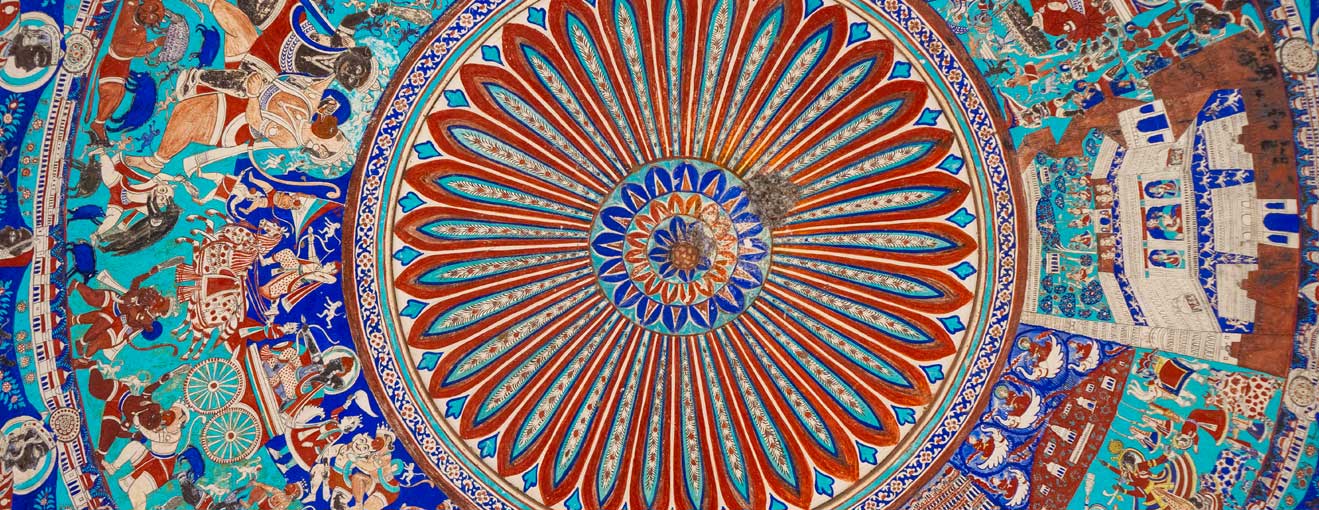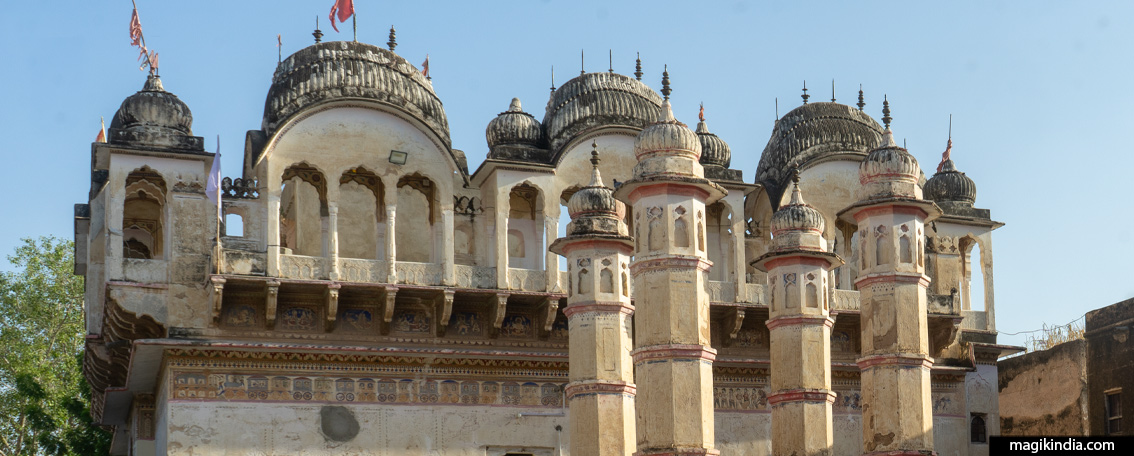
Aranmula and the fascinating Vallamkali Snake-Boat Race
If there is one imperishable memory to be brought back from a trip to Kerala it is the fascinating Aranmula regatta. The snake-boats glide gracefully and majestically along the River Pampa and the hypnotic chanting of the oarsmen will echo in your mind like a happy refrain long after the race is over.
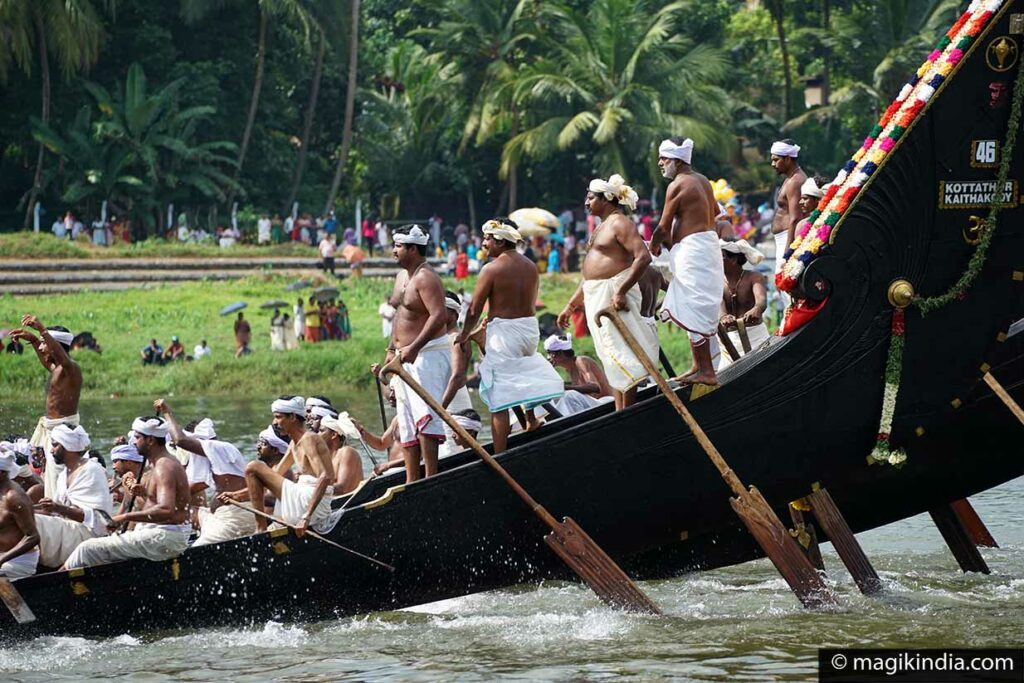
The Aranmula Uthrattathi Vallamkali or snake-boat race is one of the year’s biggest festivities in the village of Aranmula and one of the oldest traditional races in Kerala. It is linked to the Parthasarathy temple and takes place every year on Uthrattathy day in the month of Chingam in the Malayalam calendar (August-September), four days after Thiruvonam (the Onam festival).
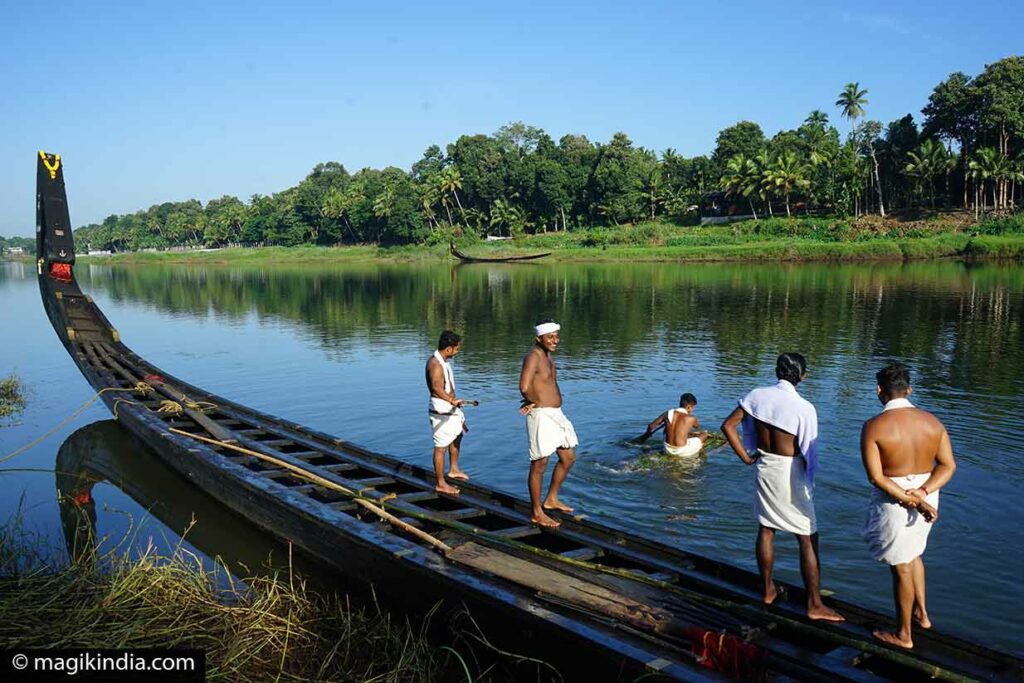
People of all social classes and religions living in and around Aranmula get involved in the Vallamkali. It is organised by the Seva Sangam Palliyodam, an organisation made up of two members from each of the 48 villages or karas that possess a snake-boat.

The legend of Aranmula
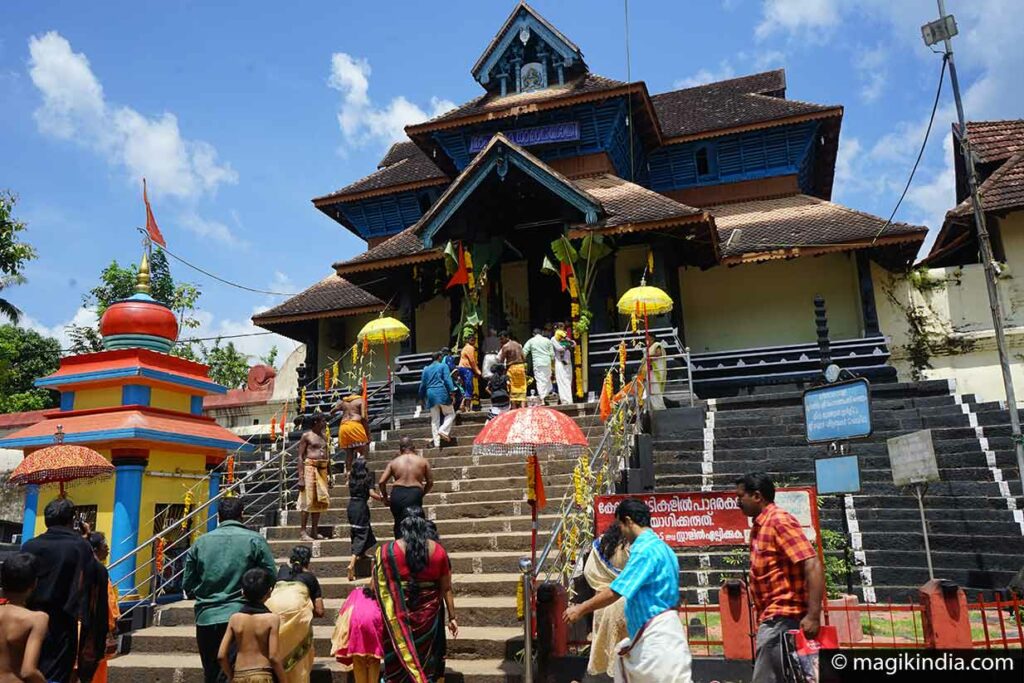
Legend has it that the Aranmula race commemorates Arjuna’s crossing of the Pampa River.
After a long period of penitence, Arjuna, one of the five Pandava brothers (who fought and won in the legendary Kurukshetra War) came back to the town of his birth carrying an idol of Lord Krishna.
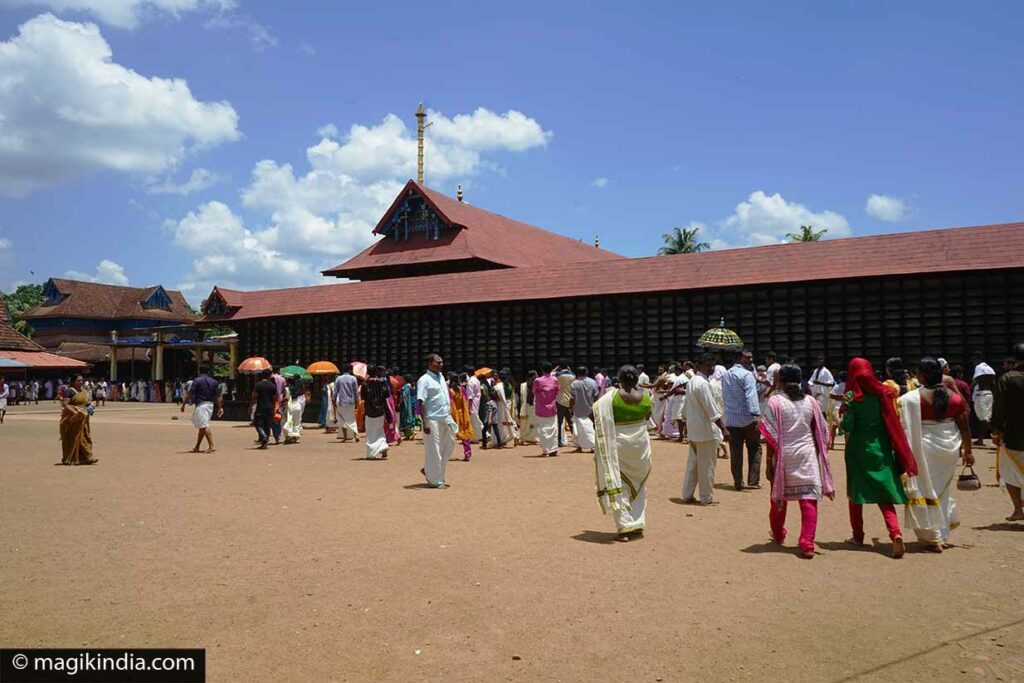
When he reached the north bank of the Pampa the river was in flood and he could not cross. A passing villager offered to take him across in a makeshift boat. Reaching the far shore, Arjuna put down the statue in the place where the Parthasarathy temple now stands.
To honour the service rendered to Arjuna by a local man, boat races are held on the river just opposite the Krishna temple.

KNOW MORE ABOUT IT +
The Palliyodams or snake-boats

The Chundan Vallams boats are called “snake-boats” because the up-curved prow looks like the raised head of a snake; it is also a reference to the mythological serpent Anantha on which Vishnu* reclines. Local folk believe that the boats were designed by Lord Krishna himself, resident god of Aranmula temple.
* Lord Krishna is said to be one of the incarnations of Lord Vishnu
The long rowboats are thought to go back to the period of the Chempakasserry kingdom. They are generally called chundan vallams in the Malayalam language, but here they are called palliyodams, divine vessels of Lord Krishna.
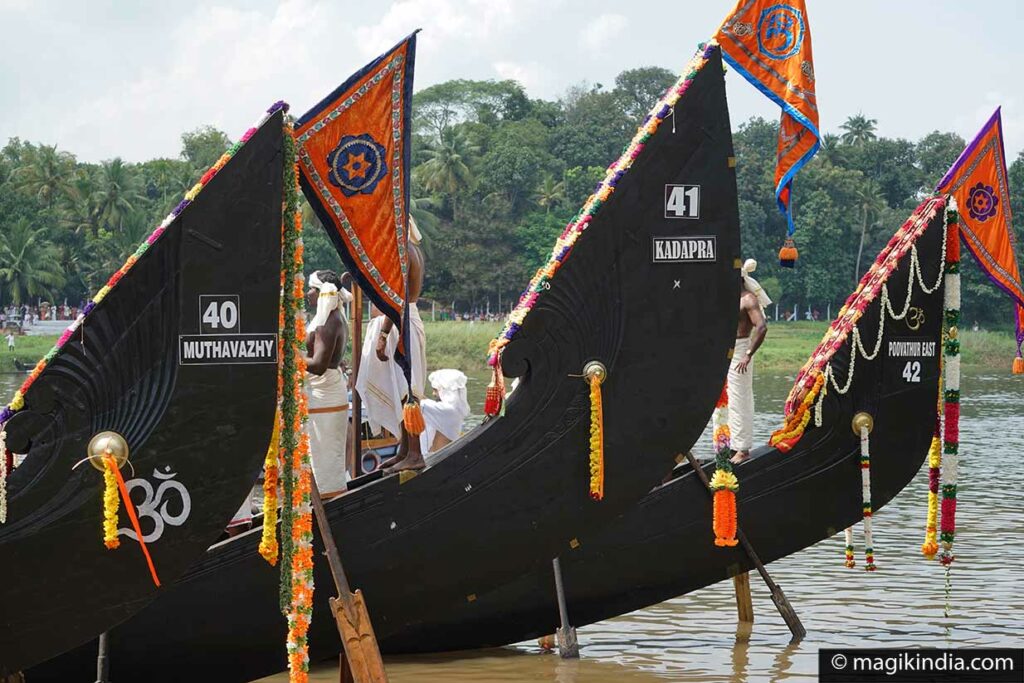
The majestic boats are built preferably from the wood of the kadampu or the anjili (a type of jackfruit tree) following the specifications given in an ancient Vedic treatise on boat building. They are about 30m long and the imposing prow rises 6m above the waterline. It takes over a year to build a palliyodam.
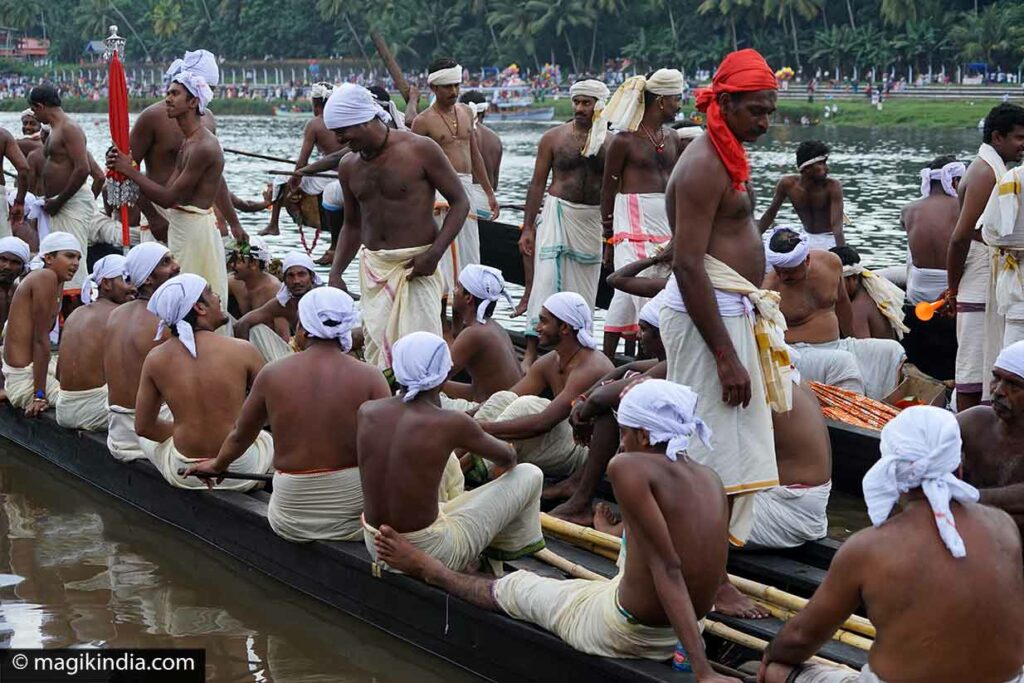
Traditionally, the boat is captained by the village head or kaarnavan and accommodates a hundred men – 80 oarsmen in two rows, 15 men who sing to set the pace, a handful of men with coloured umbrellas and five master oarsmen who control the boat’s direction using a 4m oar, the adanayampu, which acts as a rudder.
Only men from the village in question are allowed on the boat and they must wear a white loincloth or mundu and turban; shoes and shirts are forbidden.
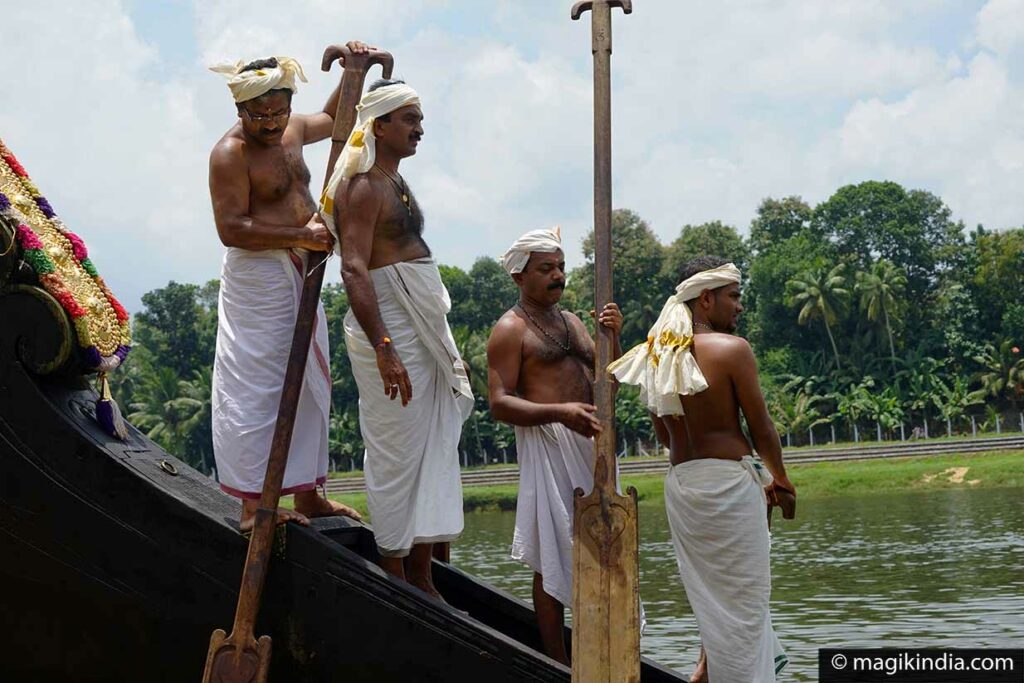
Vanchippattu, the boatmen song
The 15 cheerleaders, standing in the middle of the boat, sing the bewitching vanchipattu boat song that sets the boat’s pace.
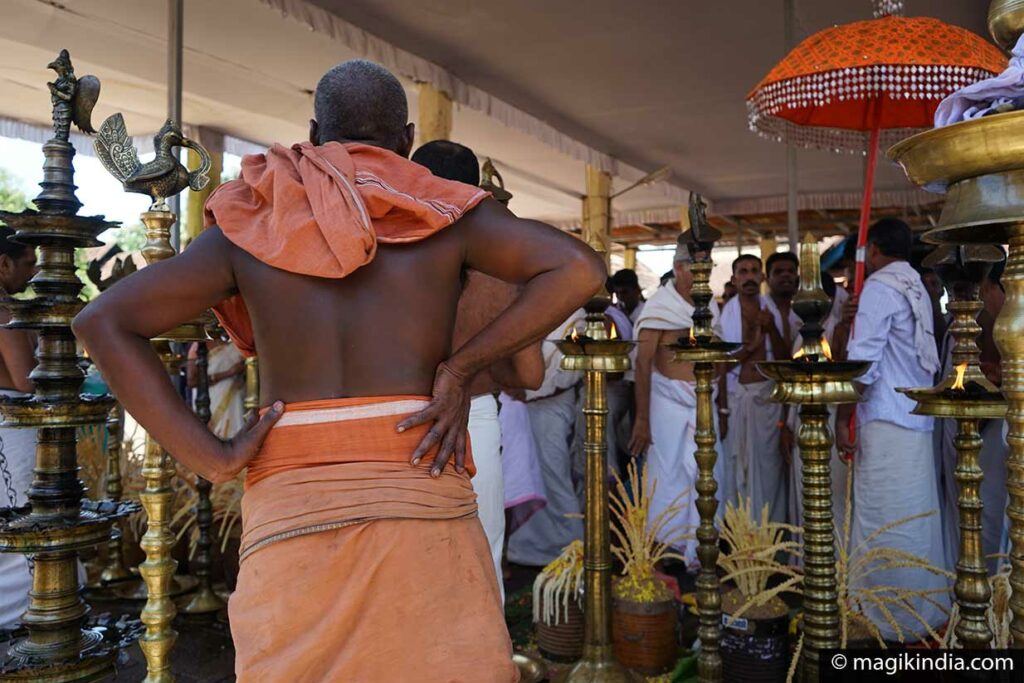
Vanchipattu is a form of folk poetry that developed in the 18th century during the reigns of Marthanda Varma and Kartika Tirunal Rama Varma. The best-known vanchipattu is Kuchela Vritham by the poet Ramapurathu Warrier. It is a classic of Malayalam literature.
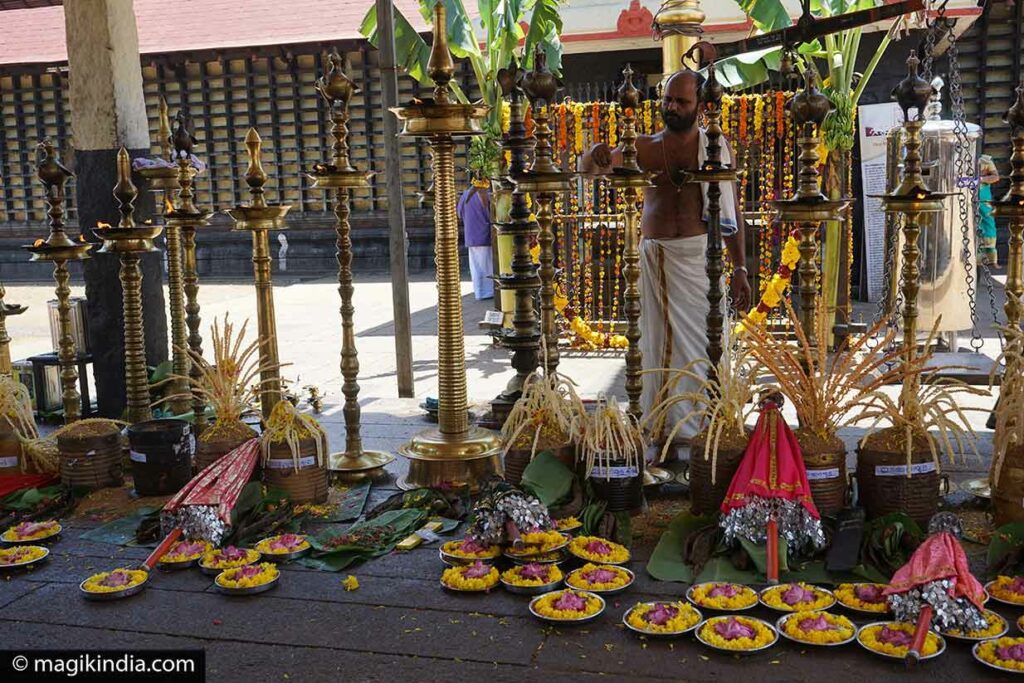
The Kuchela Vritham vanchipattu depicts the story of Kuchela, a devotee and old childhood friend of Krishna who goes to Dwarka to meet him. Ramapurathu Warrier is said to have composed and recited the poem when he was present on one of the king’s boat journeys. With his powerful description of Kuchela’s poverty and Krishna’s benevolence, Warrier indirectly described his own situation and asked the king for help. It is said that the king rewarded him amply.
[ LISTEN TO THE VANCHIPATTU, THE BOATMEN SONG ]
The Snake-Boat Race of Aranmula
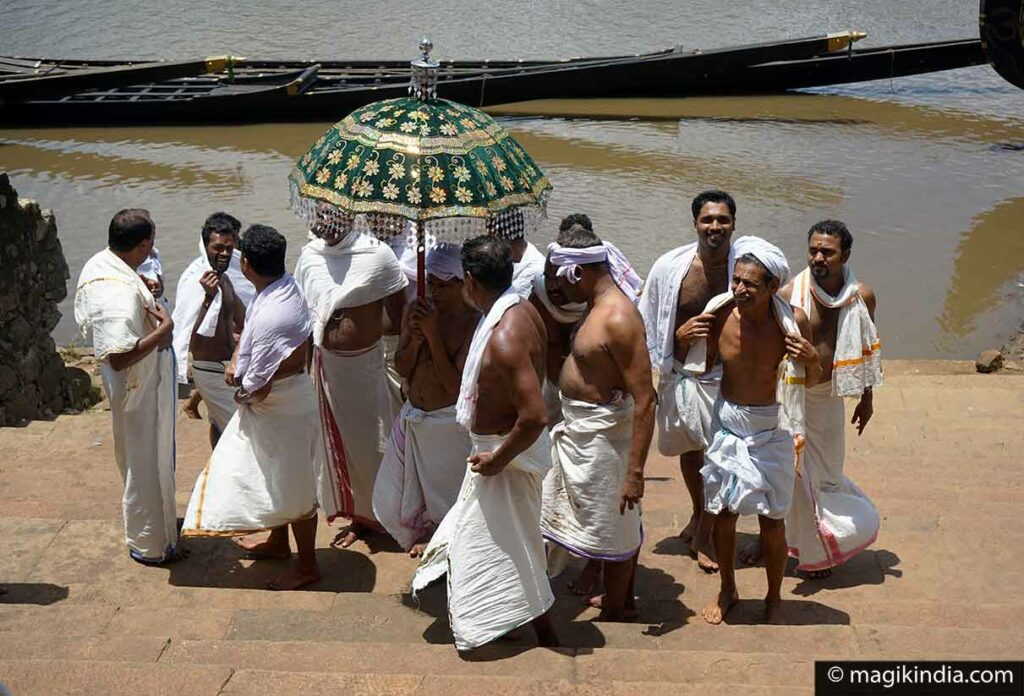
On the eve of the race all the teams tie their boats below the Parthasarathy temple.
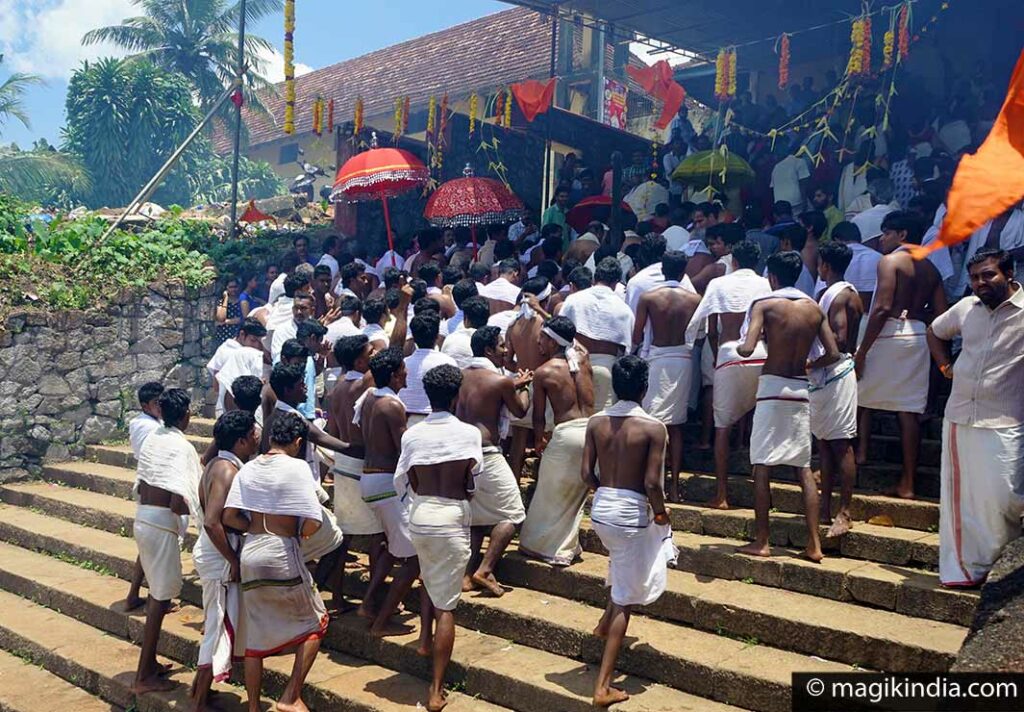
They climb the steps to the temple and are welcomed by the organisers with aratis (oil lamps) before they enter the temple to pay homage to Krishna with an offering of flowers, nirapara (a bucket containing brown rice and a sheaf of rice), tobacco and betel leaves, which they set down before the temple’s golden mast.
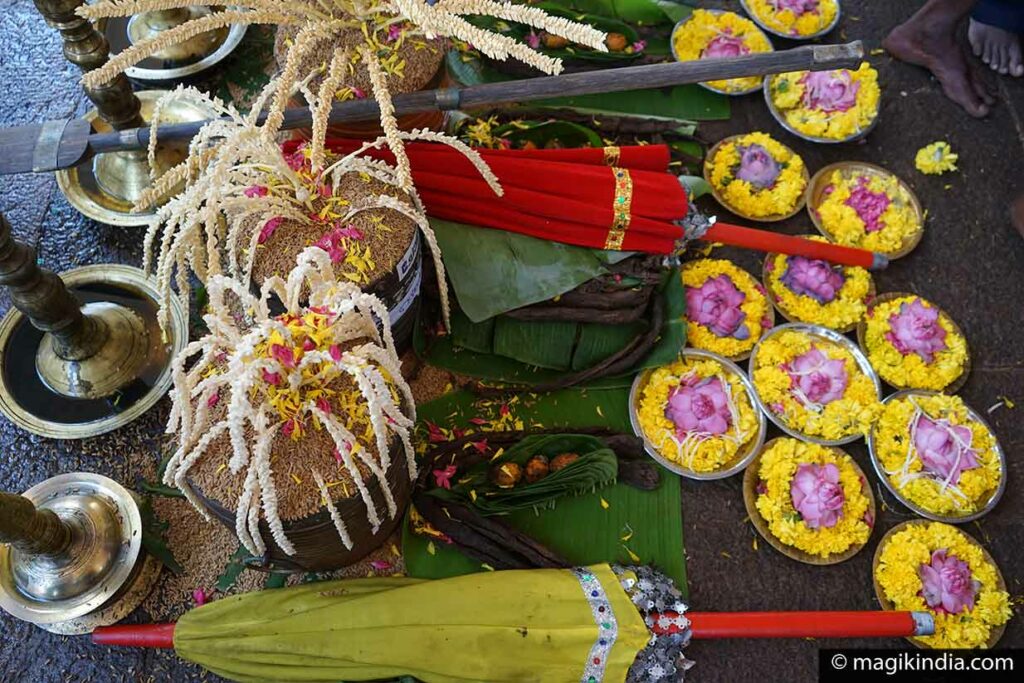
Then they sing the vanchipattu with great fervour and devotion and circumambulate the temple to the beat of traditional percussion instruments.
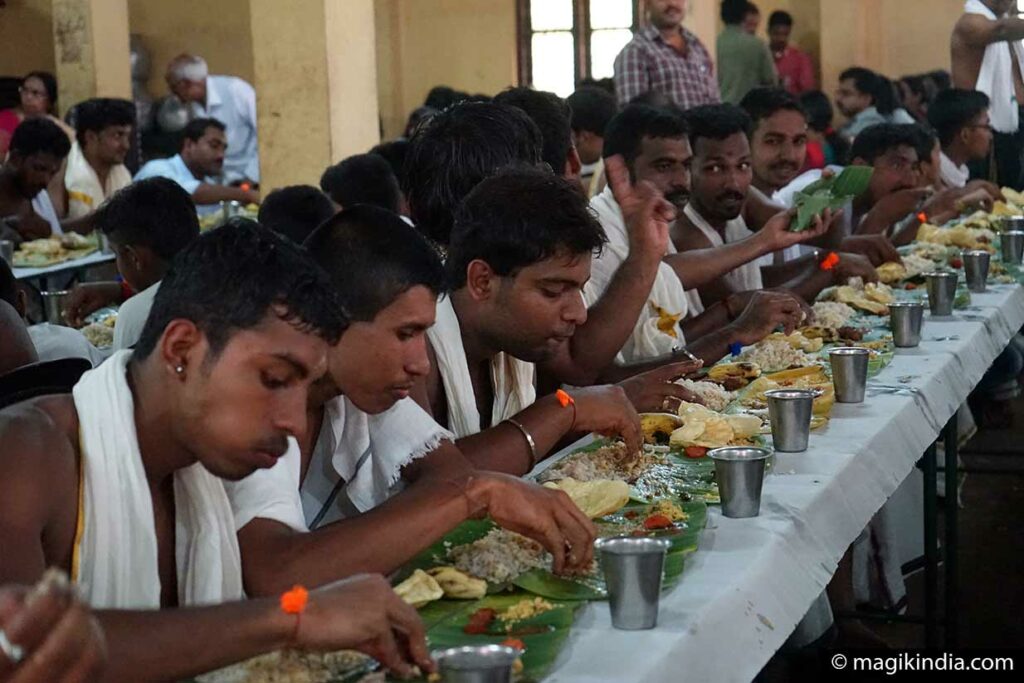
The oarsmen are then offered a succulent Valla Sadhya, a vegetarian feast served on banana leaves and composed of no fewer than 64 ingredients. The ambience turns light-hearted as the oarsmen sing songs demanding to be served particular dishes.
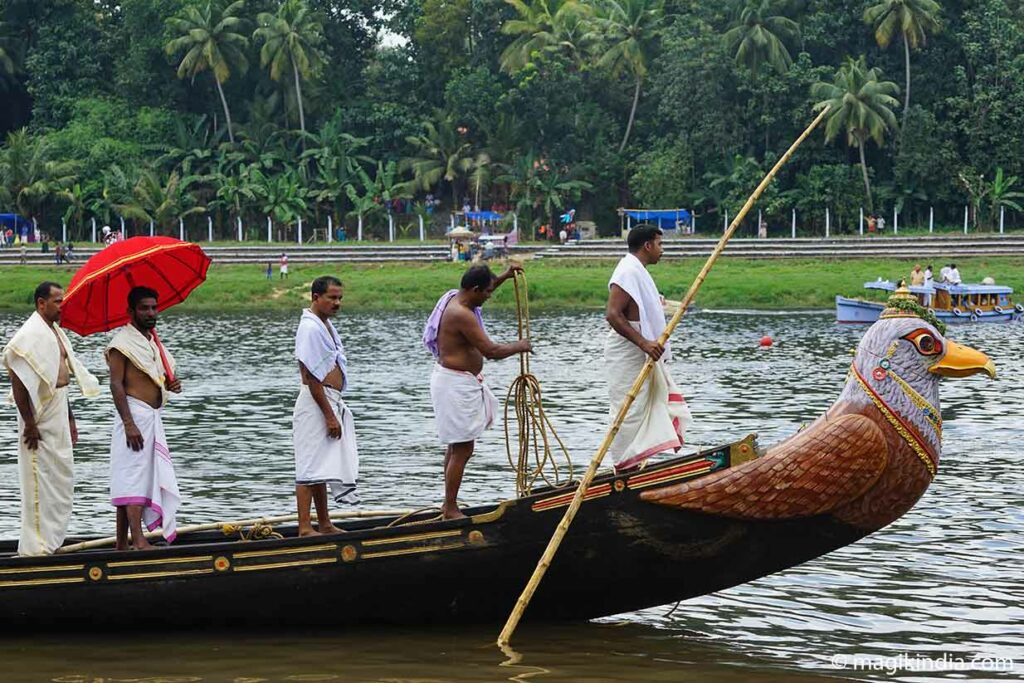
Next day, after a last prayer to Lord Krishna, the boatmen compete in friendly rivalry – a different mood to that of the Nehru Snake-Boat Race in Alleppey, where there is a more intensely competitive spirit. Although no less taxing for the rowers, the Aranmula race is above all a homage to Parthasarathy, the temple deity.
